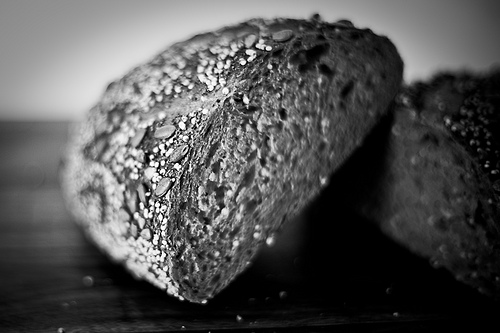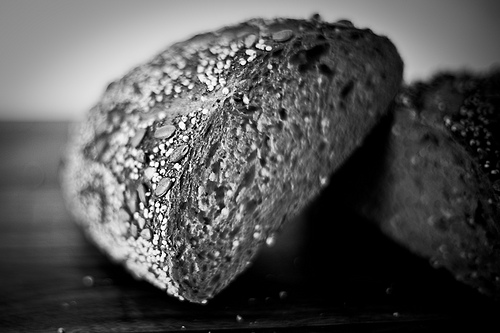 Give us this day our daily bread, as long as we know what went into it.Photo: LaCheryl PorterDearest readers,
Give us this day our daily bread, as long as we know what went into it.Photo: LaCheryl PorterDearest readers,
Last week, we kicked off our discussion of Bill Bryson’s At Home: A Short History of Private Life. You can catch up here.
Let’s move our conversation into what is perhaps the heart of a house: its kitchen. And let’s talk about a touchy subject: food adulteration.
No, not “food adultery.” (I’m not quite sure what that would be, although it sounds kinda titillating.) Food adulteration — the tainting of food with dangerous and disgusting additives — was something of a popular paranoid obsession in the 18th and 19th centuries.
Lore at the time was that bakers used crushed bones to make bread, and food adulteration became a prevailing old-timey “urban legend,” if you will. Bryson writes that particular bone-chilling notion was later debunked in a book called Food Adulteration, published in 1934. The book’s author, Frederick A. Filby, actually went to the trouble of baking bread with the alleged adulterants, such as chalk and bone-ash. He proved that the resulting loaves were impossibly hard, or tasted and smelled funny — making them inedible and unmarketable.
So, phew. There probably never were any bones in the bread. But people’s skepticism about what went into their food wasn’t entirely unwarranted (and perhaps it represented an initial backlash to the notion of unnatural or processed food). As more and more food was produced for sale, and less produced in the home, expensive ingredients were replaced by less expensive ones. For example, lead acetate made drinks sweeter and was much cheaper than sugar (it is also highly toxic, and was outlawed in the 18th century).
Bryson makes mention of a fabled gross food story in the news in the 1860s: “[A] London confectioner was fined ‘for coloring his sweets yellow with surplus pigment left over from painting his cart.'” Sounds like the advent of artificial coloring to me.
Of course, since those olden days, food has been “adulterated” with all kinds of chemicals and fillers. What highly processed foods do you think are the most disgusting now? What will you do anything to avoid? What processed foods do you remember eating (and loving) as a kid? What foods have you always been a little skeptical about? And what foods do you love so much you’d eat them even if you found out they were made with crushed bone flour?
Ickily,
Umbra


